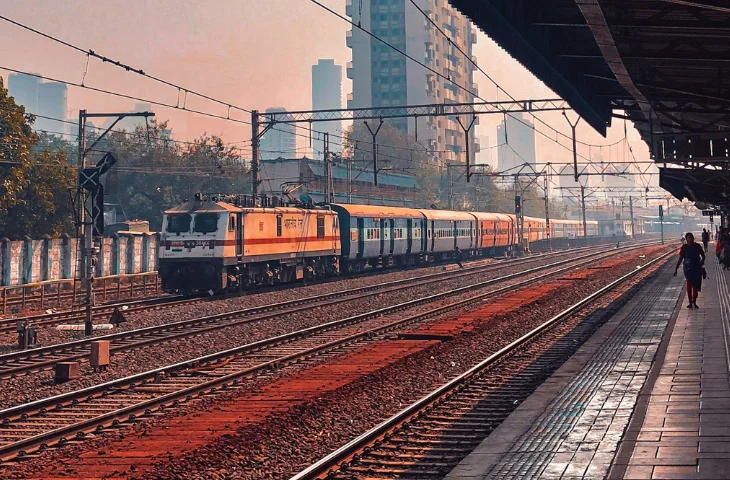History of Indian Railways: Indian Railways is not just a transport system; it is the lifeline of India. From carrying millions of passengers daily to transporting goods across the country, it has been a backbone of India’s economy and social integration for more than 170 years. For railway exam aspirants, knowing the history, key milestones, and major achievements of Indian Railways is extremely important. Let’s walk through the journey of Indian Railways in simple words
The Beginning of Indian Railways
The story of Indian Railways started in the mid-19th century during British rule. The first passenger train in India ran on 16 April 1853, covering a distance of 34 kilometers between Mumbai (Bori Bunder) and Thane. This historic journey marked the birth of railways in India.
- The train had 14 coaches and carried around 400 passengers.
- It was hauled by three engines named Sahib, Sindh, and Sultan.
- This development not only changed transportation but also laid the foundation for industrial and social growth in India.
After the success of the first railway line, rapid expansion took place:
- 1854: The second railway line was opened between Howrah and Hooghly.
- 1856: Train services started between Madras (Chennai) and Arakkonam.
- By the end of the 19th century, India had an extensive rail network connecting major cities like Bombay, Calcutta, Madras, and Delhi.
The primary purpose of railways during British rule was to transport raw materials from the interior regions to ports for export. But soon, it became a popular means of passenger travel as well.
Growth and Challenges in the Early 20th Century
During the early 1900s, Indian Railways saw both progress and challenges. Some of the main challenges include:
- The network expanded further into smaller towns and rural areas.
- The railway system played a vital role during World War I (1914–1918) and World War II (1939–1945) by transporting troops and goods.
- However, railways also suffered from neglect and overuse during these wars, leading to a decline in service quality.
By 1947, at the time of India’s independence, the country had a rail network of more than 55,000 kilometers.
History of Indian Railways – Post Independence Era
After independence, the newly formed Government of India took control of the railways. This was a turning point in the history of Indian Railways.
- 1951: All rail systems were nationalized, and Indian Railways was established as a single, unified organization.
- The focus shifted to modernization, expansion, and providing affordable travel for the common people.
This period also saw the introduction of five-year plans where the government invested heavily in rail infrastructure, bridges, tracks, and electrification.
Important Milestones in Indian Railways
There have been various milestones in the Indian Railways since its inception. To understand the journey better, here are some key milestones of Indian Railways:
| Milestone/Achievement | Year | Details |
| First Passenger Train | 1853 | The first passenger train ran between Mumbai and Thane. |
| First Electric Train | 1925 | The first electric train ran between Bombay VT (now CSMT) and Kurla. |
| Nationalization of Railways | 1951 | All private railway companies merged to form Indian Railways. |
| First Metro Rail | 1984 | India’s first metro service started in Kolkata. |
| Computerized Ticketing | 1986 | A computerized reservation system was introduced, making booking faster and efficient. |
| Konkan Railway | 1998 | Connected Maharashtra, Goa, and Karnataka through difficult terrains. |
| Delhi Metro | 2002 | Launch of the Delhi Metro, marking the modern metro systems in India. |
| Bullet Train Project | 2017 onwards | India’s first High-Speed Rail Project (Mumbai–Ahmedabad) announced using Japanese Shinkansen technology. |
Social and Cultural Impact of Indian Railways
The impact of Indian Railways goes beyond just transport. Given below are some of the main socio-cultural impacts of Indian Railways
- It has connected villages, towns, and cities, making travel easier for people from all walks of life.
- Railways have played a major role in cultural integration, as people from different states can travel and interact with ease.
- Festivals, tourism, and trade heavily depend on the railway system.
Indian Railways in the 21st Century
In the 21st century, Indian Railways is focusing on speed, safety, and modernization. Some of the important features include:
- Semi-high-speed trains like Gatimaan Express and Vande Bharat Express are now operational.
- Stations are being modernized with airport-like facilities.
- Digital platforms like IRCTC mobile apps and UTS on Mobile are simplifying ticket booking.
- India is working on the Bullet Train Project, which will change the future of rail travel in the country.
Future Goals of Indian Railways
The vision of Indian Railways includes various aspects such as electrification of rail routes, modernization of stations, and more. Some of the future goals are given below:
- 100% electrification of rail routes.
- Introduction of more high-speed trains.
- Modernization of stations with better passenger amenities.
- Increasing the share of freight transport to support India’s economy.
- Reducing the carbon footprint and achieving eco-friendly operations.
The history of Indian Railways is a journey of progress, transformation, and service to the nation. From the first passenger train in 1853 to the upcoming bullet train, railways have been a symbol of growth and unity. With continuous modernization and a focus on sustainability, Indian Railways is not just a transport system but a proud achievement of India.
FAQs
The first passenger train in India ran on 16 April 1853, covering a distance of 34 kilometers between Mumbai (Bori Bunder) and Thane
In 1951, all rail systems were nationalized, and Indian Railways was established as a single, unified organization.
The first electric train ran between Bombay VT (now CSMT) and Kurla.
It has connected villages, towns, and cities, making travel easier for people from all walks of life. Railways have also played a major role in cultural integration, as people from different states can travel and interact with ease.
Some of the future visions of Indian Railways include – 100% electrification of rail routes, introduction of more high-speed trains, modernization of stations with better passenger amenities, increasing the share of freight transport to support India’s economy, and more

Hello! This is Arijit Dutta. I am a skilled Content Writer at Oliveboard with nearly 3+ years of experience in crafting engaging, informative, and exam-focused content for the Railways Domain. With a strong command of language and a keen understanding of learner needs, I contribute significantly to Oliveboard’s mission of delivering high-quality educational resources. Passionate about clear communication and continuous learning, I consistently create content that helps government job aspirants achieve their goals. Outside of work, I enjoy playing cricket and listening to music, which helps me stay balanced and creative in my professional journey.
